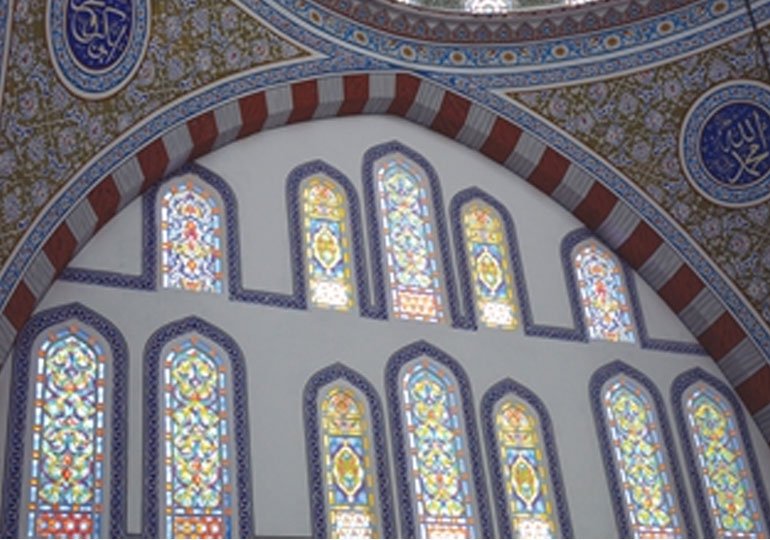
Mosque Windows
Mosque Window Construction: Traditional and Modern Aesthetics
Mosque windows are essential elements that complete the architectural aesthetics of places of worship and provide lighting for the interior. In both traditional and modern mosque designs, window construction combines aesthetic and functional requirements. Here are detailed insights into the construction of mosque windows:
Material Selection
The materials used in the construction of mosque windows are important for both durability and aesthetics. The most commonly used materials are:
Wood: Frequently preferred in traditional mosque windows, wood provides a natural and warm appearance. Enriched with carvings and decorations, wooden windows add a historical touch to mosques.
Aluminum: Used in modern mosque windows, aluminum is lightweight and durable. It is preferred due to its ease of shaping and long lifespan.
PVC: An economical and durable option, PVC is ideal especially for large windows. It provides thermal insulation and requires minimal maintenance.
Design and Aesthetics
The design of mosque windows should be in harmony with the overall architectural style of the mosque. Geometric patterns and botanical motifs seen in traditional Ottoman and Seljuk mosques inspire window designs. In modern mosques, minimalist and functional designs may be preferred.
Geometric Patterns: Geometric patterns, frequently seen in traditional mosque windows, provide aesthetics and symmetry. Hexagons, octagons, and star shapes add artistic value to the windows.
Stained Glass Windows: Stained glass windows using colored glass illuminate the mosque interior with vibrant colors. They can be used in both traditional and modern designs.
Arched Windows: Arched windows are indispensable elements of mosque architecture. They provide both aesthetic and structural support.
Construction Process
Design Phase: Initially, the design of the mosque windows is made. Collaboration between the architect and calligrapher is important in this phase. The size, shape, and patterns of the windows are determined.
Material Preparation: The selected materials are prepared according to the window design. If wood, carvings and decorations are made; if aluminum or PVC, they are cut and prepared for assembly.
Assembly: The prepared window parts are mounted on the mosque wall. This stage requires precision and meticulousness.
Final Inspection: After assembly is completed, the windows are inspected and necessary adjustments are made.
Maintenance and Protection
Regular maintenance is required to ensure the longevity of mosque windows. Wooden windows should be varnished or painted at regular intervals. Aluminum and PVC windows should be cleaned, and moving parts such as hinges should be checked.
Conclusion
Mosque windows are not just aesthetic elements but also key components that illuminate and refresh the interior of places of worship. Whether made with traditional or modern materials, mosque windows always add value to mosque architecture.